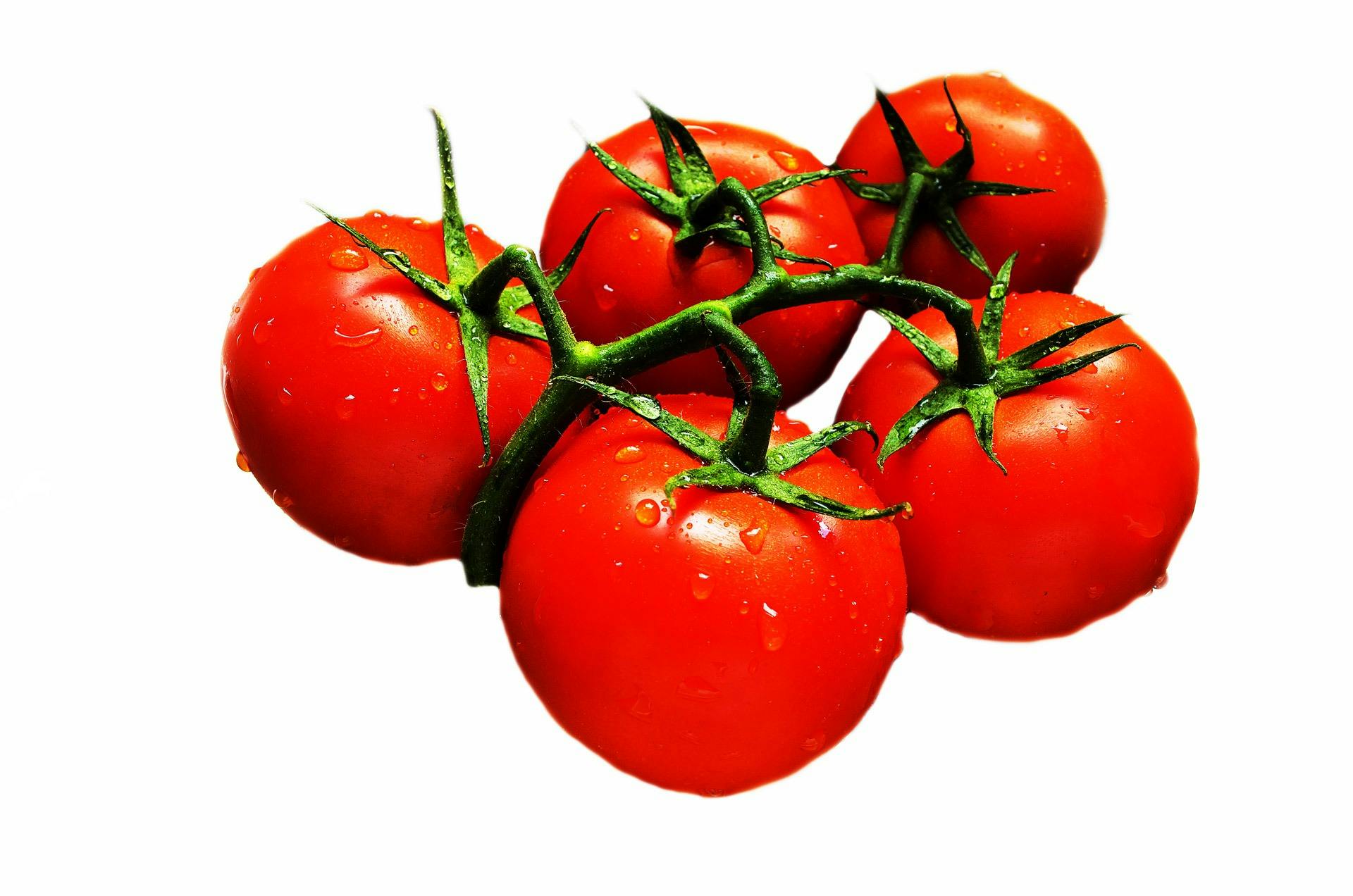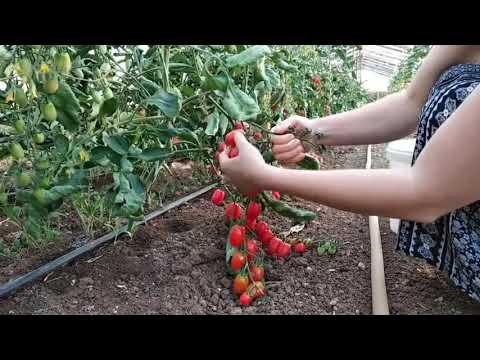Tomato plants are a great addition to any garden or backyard. Not only are they easy to grow, but they also produce delicious and nutritious tomatoes. One of the most common questions asked by tomato growers is how long will a tomato plant produce? The answer depends on a few factors including the type of tomato plant, the climate in which it is grown, and the care that it receives. In this article, we will discuss these factors and how they affect the amount of time a tomato plant will produce fruit.A tomato plant can produce for up to 4 months, depending on the variety of tomato and growing conditions.
Climate
The climate has a huge impact on the production of tomato plants. The ideal temperature for growing tomatoes is between 65 and 85 degrees Fahrenheit. If temperatures drop below 55 degrees or rise above 95 degrees, the plant may not be able to produce fruit. Additionally, tomato plants need a lot of sunlight to grow and produce fruit, so it’s important to choose a planting site that gets at least 6-8 hours of sun each day.
Soil Type
Tomato plants require well-draining soil that is rich in nutrients. Soil that is too sandy or too clay-like may not provide enough nutrients for the plant to produce fruit. Additionally, the pH level of the soil should be between 6.2 and 6.8 for optimal production. If the pH level is too low or too high, then it can interfere with the ability of the plant to absorb nutrients from the soil.
Watering Frequency
Tomato plants need consistent watering in order for them to produce fruit. Overwatering can lead to disease or root rot, while underwatering can lead to poor production or even death of the plant. It’s important to water your tomato plants regularly but not excessively, as this will ensure optimal growth and production.
Fertilization
Tomato plants require regular fertilization in order for them to perform optimally and produce fruit. Fertilizers provide essential nutrients that are lacking in most soils, so they are necessary for healthy growth and development. It’s important to use a fertilizer that is specifically designed for tomatoes – this will help ensure that your plant gets all of the necessary nutrients it needs.
Pest Management
Pests can cause serious damage to tomato plants if they are not managed properly. Common pests include aphids, spider mites, cutworms, whiteflies, and hornworms. To prevent pest infestations it’s important to use an appropriate insecticide or other pest management techniques such as hand-picking when possible. Additionally, good garden hygiene such as cleaning up debris and weeds can also help reduce pest populations in your garden.
Signs of Poor Tomato Plant Production
Tomatoes are one of the most popular vegetables grown in home gardens. However, even with the best care, tomato plants sometimes don’t produce as expected. Signs of poor tomato plant production can range from a lack of flowers and fruit to a weak and unthrifty plant. To ensure a successful harvest, keep an eye out for these common signs of poor tomato plant production.
The first sign is a lack of flowers on the tomato plant. If no flowers are seen, it is likely that pollinators such as bees have not been able to reach the flowers and fertilize them. This can be caused by extremely windy conditions or by not having enough pollinator-friendly plants nearby.
Another telltale sign is small, undeveloped fruit on the tomato plants. If the tomatoes are not reaching their full size, it usually indicates a lack of nutrients or water in the soil or too much nitrogen fertilizer being applied. In addition to small fruits, you may also notice misshapen tomatoes or discolored fruits with blotchy patches.
In some cases, there may be no visible signs of poor tomato production but the plants may still be unthrifty and weak. This can be caused by disease, pests, or environmental stress such as drought or extreme heat and cold temperatures. To prevent this from happening, create a garden plan that takes into account soil type and conditions as well as climate considerations.
By keeping an eye out for these common signs of poor tomato plant production, you can ensure you’ll have a successful harvest each year!
Maximizing Tomato Plant Production
Growing tomatoes can be a rewarding experience, both for the gardener and for the environment. Tomatoes are a healthy food that is relatively easy to grow, and they provide a great tasting reward for all your hard work. However, if you want to maximize your tomato plant production, there are a few tips you should follow.
First and foremost, it is important to set up an efficient watering system for your tomato plants. Tomatoes need a steady supply of water in order to thrive, so make sure that you’re providing the right amount of water at the right times. Additionally, be sure to use mulch around your plants to help retain moisture in the soil and prevent weeds from taking over your garden.
Second, choose the right tomato varieties for your area. Different varieties of tomatoes have different needs when it comes to temperature and soil type, so be sure to select varieties that are suited for the climate where you live. You should also consider choosing disease-resistant varieties that can handle any pests or diseases that might attack your plants.
Finally, make sure you’re providing plenty of sunlight for your tomato plants. Tomatoes need at least six hours of direct sunlight per day in order to produce healthy fruits. If possible, try to give them even more sunshine by setting up reflective surfaces such as mirrors or white boards near their beds so they can get maximum exposure.
By following these tips and tricks, you can ensure that your tomato plants will produce plenty of delicious fruits throughout the growing season. With proper care and attention, you should have no problem maximizing your tomato plant production!
Choosing a Variety of Tomato Plants for Optimal Production
Growing tomatoes can be a rewarding and lucrative endeavor, but it requires careful planning and selection of the right variety of tomato plants. The most important factor in choosing the right variety of tomatoes is to ensure that it is adapted to your specific climate. Different varieties will thrive in different conditions, and selecting one that is well-suited to your local climate will help ensure a successful crop.
In addition to selecting varieties adapted to your local climate, it is also important to consider the type of tomato you would like to grow. There are several categories of tomatoes, including saladette, beefsteak, cherry, paste, and plum. Each type has its own unique characteristics and uses. Saladette tomatoes are typically small and sweet – perfect for salads or snacking. Beefsteak tomatoes are large and meaty – ideal for slicing into sandwiches or putting on burgers. Cherry tomatoes are small but sweet – great for snacking or adding into salads. Paste tomatoes tend to be more acidic in flavor – perfect for making sauces or salsas. Finally, plum tomatoes are oblong in shape and have a firm texture – great for slicing into salads or cooking into dishes like ratatouille.
In addition to these categories, there are also many different varieties within each type. For example, some popular saladette varieties include ‘Early Girl’, ‘Sweet Million’, and ‘Pineapple’. For beefsteaks, some popular choices include ‘Big Boy’, ‘Brandywine’, and ‘Mortgage Lifter’. When selecting your tomato varieties, it is important to consider the size and flavor profile you are looking for as well as any other special characteristics such as disease resistance or higher yield potential.
Finally, it is important to remember that different tomato varieties have different life cycles – some may produce earlier than others while others may require longer growing times before producing fruit. It can be helpful to research the life cycles of each variety before making a selection so that you can plan accordingly for optimal production over the growing season. By carefully considering all of these factors when selecting your tomato plants, you can ensure an abundant harvest of delicious tomatoes throughout the season!

Soil Requirements for Maximum Tomato Plant Production
Tomatoes are a popular and versatile vegetable, and many gardeners enjoy growing them. For the best yield of tomatoes, it is important to meet the soil requirements for maximum tomato plant production. The ideal soil should be well-draining and nutrient-rich. It should also have a pH level between 6.0 and 6.8. The soil should also be aerated, as this allows for better root growth and nutrient uptake by the plant. Additionally, the soil should be free of weeds and other debris that can impede the growth of the plants. Adding compost or manure can help create more nutrient-rich soil and can also help to improve drainage. It is important to note that too much nitrogen can cause excessive foliage growth at the expense of flowers and fruit, so it is important to use fertilizers that contain balanced amounts of nutrients such as potassium, phosphorus, and magnesium. Finally, it is essential to water regularly in order for the plants to thrive; however, it is important not to over water as this can lead to rot or disease in tomatoes plants.
Overall, providing tomatoes with adequate soil requirements will result in healthier plants with higher yields of fruit production. By following these guidelines gardeners will be able to achieve successful tomato harvests each season!
Watering and Fertilizing to Increase Tomato Plant Production
Watering and fertilizing are essential components of successful tomato gardening. Proper watering and fertilizing will help ensure that your tomato plants receive the nutrients they need to produce abundant, healthy fruits. Water is important for transporting nutrients throughout the plant, while fertilizer helps provide the necessary elements for growth. When it comes to caring for your tomato plants, understanding the basic principles of watering and fertilizing is key.
When watering tomato plants, be sure to provide enough water to keep the soil moist but not soggy. Water deeply once a week during dry spells, or more often if the weather is especially hot or dry. Allowing the soil to dry out between waterings will help prevent diseases such as root rot or blossom end rot from developing on your tomatoes. When you do water, aim for the base of the plant rather than directly on the leaves or fruit.
Fertilizing your tomato plants is also important for increasing production and providing essential nutrients. Start by applying a general-purpose fertilizer when you first plant your tomatoes in spring; this will give them an initial boost of nutrients that will aid in their growth and development throughout the season. After that, use a high-phosphorus fertilizer every 2-4 weeks during the growing season to ensure that your plants are getting enough phosphorus for optimal fruit production. Additionally, consider using a foliar spray formulated specifically for tomatoes once every two weeks throughout the growing season; this type of fertilizer can help ensure that your plants have access to all necessary micronutrients as well as macronutrients like nitrogen and phosphorus.
By following these simple steps for watering and fertilizing your tomato plants, you can help create an ideal environment for increased growth and production throughout their growing season!
Pruning and Training to Increase Tomato Plant Production
Pruning and training are two important techniques that can be used to increase the production of tomato plants. Pruning involves removing excess foliage and stems that may be blocking light or air circulation around the plant, while training involves manipulating the shape of the plant so that it receives optimal sunlight and airflow. Pruning can also help to keep plants healthy by removing diseased or damaged leaves, as well as encourage more blooms and fruit production. Training can also help to prevent overcrowding of branches, which can lead to decreased production.
When pruning tomato plants, it is important to cut away any dead or damaged leaves, as well as any foliage that is blocking light or air circulation. It is best to prune the plant in the early morning before temperatures rise too much, as this will reduce stress on the plant. Pruned stems should be cut back at least one-third of their length, but no more than half. When removing entire branches, make sure to cut them just above where they attach to another branch or stem.
Training tomato plants involves tying branches and stems together so they grow in a certain direction or shape. This can help promote better airflow through the plant and maximize sunlight absorption. It is important when training plants not to tie them too tightly, as this could lead to damage such as broken stems or branches. Additionally, using materials such as twine or string could lead to girdling of stems which can negatively affect growth and production.
Pruning and training are simple but effective techniques that can be used to increase tomato plant production. By removing dead or damaged leaves, encouraging better airflow through the plant, and manipulating stem growth direction, gardeners can maximize their tomato yields with minimal effort.

Conclusion
A tomato plant can produce fruit for anywhere between three and six months, depending on the climate and the variety of tomato. While some tomato plants may produce fruit for several years, continual harvesting will not be possible after six months as the plant will become weak and no longer able to bear fruit. When growing tomatoes, it is important to choose varieties that are suited to the climate and environment in which they are being grown. With proper care and attention, a tomato plant can give an abundance of delicious fruits for several months.
Ultimately, a tomato plant can provide an abundance of delicious tomatoes over a period of several months. With careful selection of varieties suited to the local climate and regular maintenance, gardeners can enjoy fresh produce from their own backyard for many months into the year.

